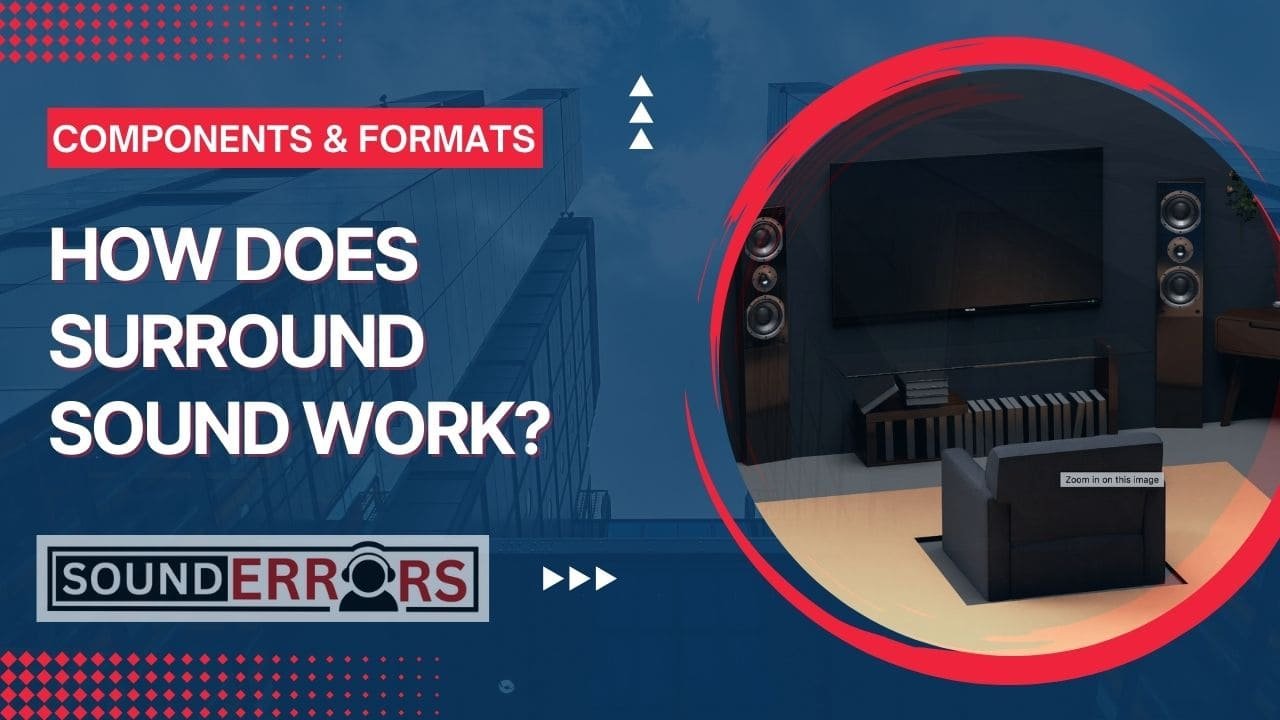This Post may contain affiliate links, when you purchase through links on our site, we may earn an affiliate commission at no extra cost to you. Here’s how it works.
Surround sound is an audio technology designed to enrich the listening experience by creating an immersive sound environment.
Table of Contents
ToggleThis technology, pivotal in both home entertainment and cinemas, aims to replicate a real-life audio experience, making you feel as though you’re at the center of the action.
Understanding how does surround sound work involves delving into the mechanics, components, and various formats of surround sound, offering a comprehensive understanding of its functionality and immersive qualities.
The Basics of Surround Sound
At its core, surround sound involves the use of multiple audio channels and speakers strategically placed around the listener to create a multidimensional sound environment.
Unlike traditional stereo systems, which use two channels (left and right), surround sound can employ five, seven, or more channels to envelop the listener in audio.
Components of Surround Sound
1. Speakers: The most visible part of a surround sound system. A typical setup includes:
- Front Speakers: Placed to the left, right, and center of the listening area, these speakers handle the bulk of the sound, including dialogue and main action sounds.
- Rear or Surround Speakers: Positioned to the sides or behind the listener, these speakers deliver ambient noises and sound effects, enhancing the depth of the audio environment.
- Subwoofer: Dedicated to low-frequency sounds (bass), it adds depth and power to explosions, thunder, and music.
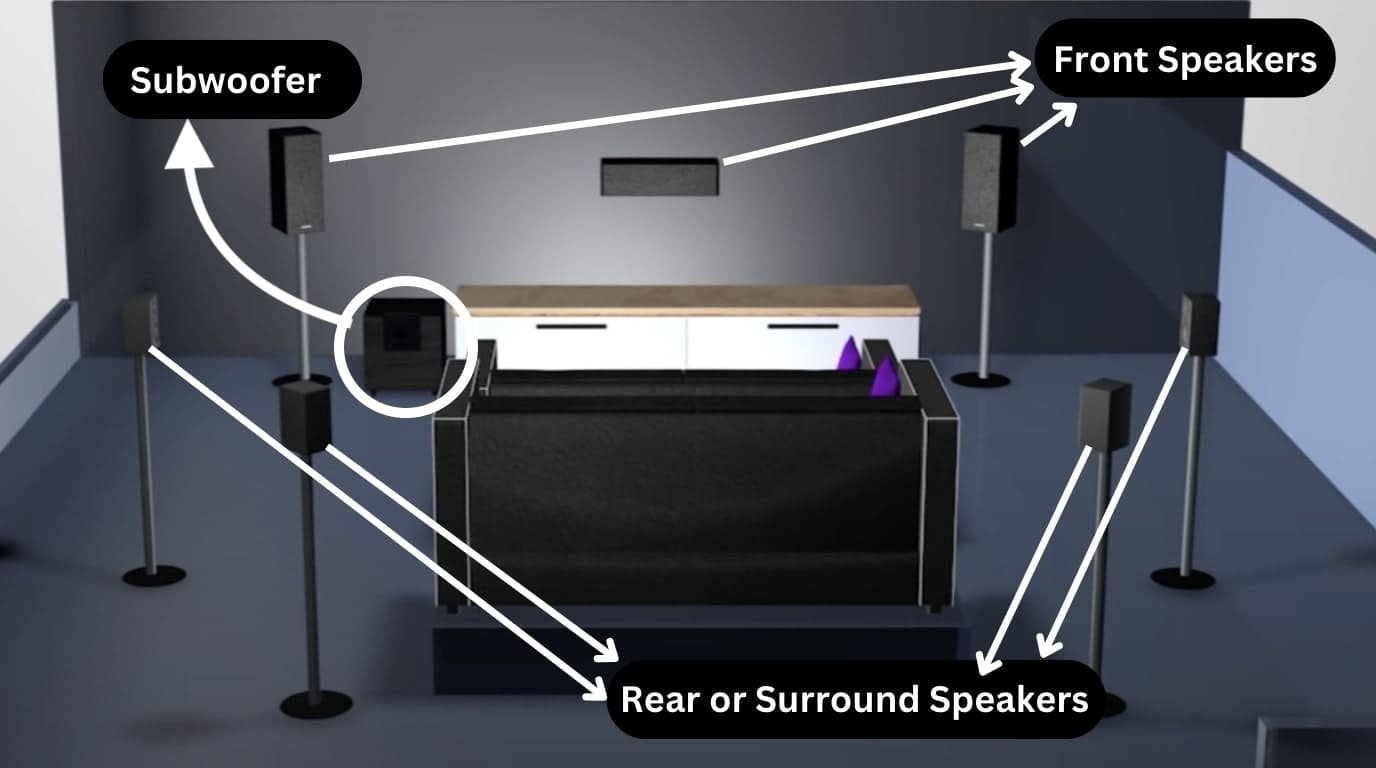
2. Audio Receiver: Acts as the system’s brain, receiving, decoding, and distributing audio signals to the appropriate speakers.
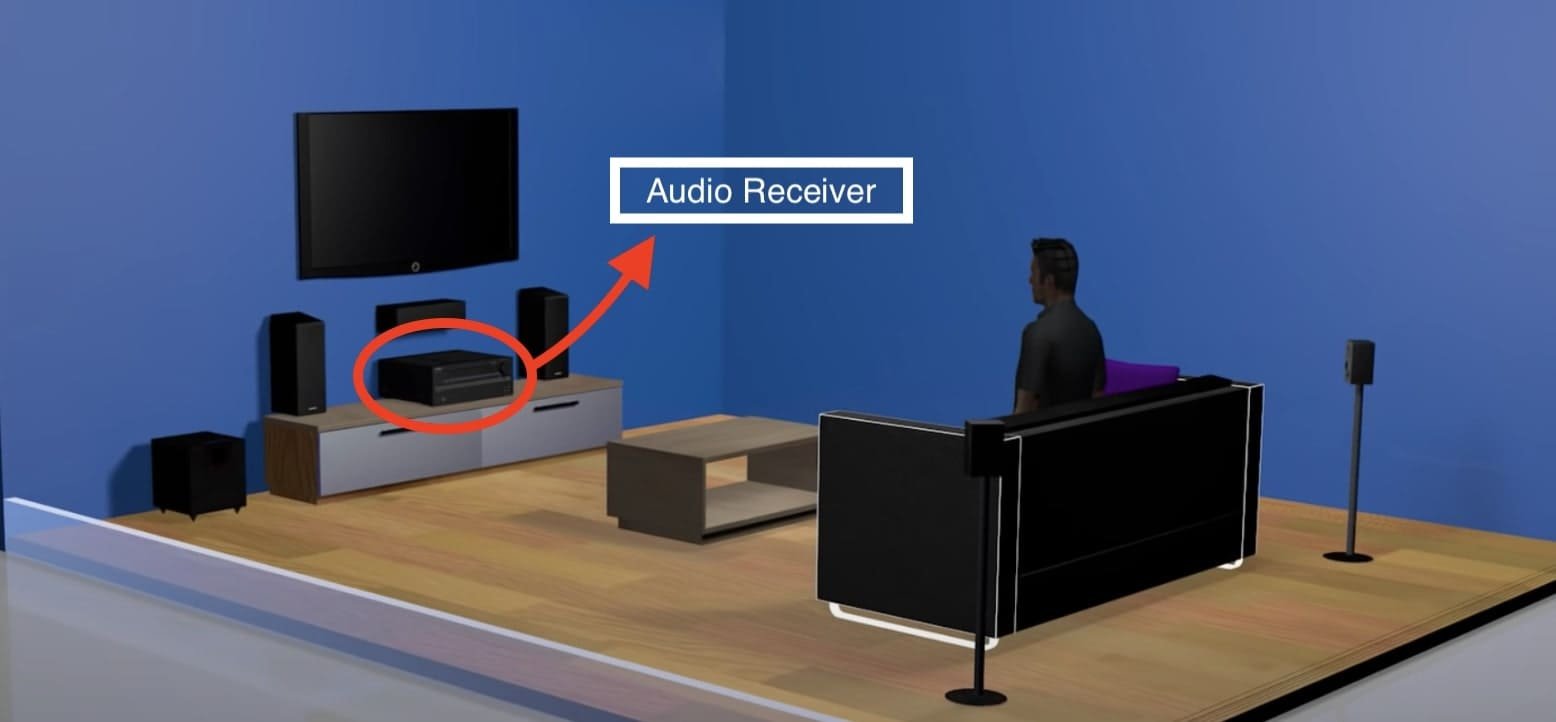
3. Media Source: The origin of the audio content, such as a Blu-ray player, streaming device, or game console.
How It Works?
Surround sound operates on the principle of spatial audio cues. By directing sounds to specific speakers, it simulates the way we experience sound in real life, with noises coming from all directions.
Here’s a step-by-step breakdown:
- Encoding: The process begins with the creation of the audio content. Sound engineers record and mix audio tracks specifically for surround sound, assigning different sounds to separate channels.
- Decoding and Distribution: The audio receiver decodes the incoming audio signal, identifying which channel each sound belongs to. It then sends these sounds to the corresponding speakers.
- Perception: As the audio plays from various directions, the listener’s brain processes these cues, creating a 3D sound landscape. This immersive experience is what makes surround sound so compelling.
Surround Sound Formats
Several formats exist, each with its own method of encoding and reproducing sound. Some of the most popular include:
- Dolby Digital and DTS: Widely used in cinemas, DVDs, and Blu-rays, these formats support up to 5.1 channels (five speakers and one subwoofer).
- Dolby Atmos and DTS:X: Advanced formats that add height channels, allowing sound to come from above, further enhancing the 3D audio effect.
Setting Up Your Surround Sound System
For the optimal experience, speaker placement is key. Follow these guidelines:
- Place the center speaker above or below the TV, aligning it with the center for clear dialogue.
- Position the front left and right speakers at ear height, forming an equilateral triangle with the listening area.
- Rear speakers should be to the sides or slightly behind the listening position, also at ear height.
- The subwoofer can be placed anywhere in the room, as bass frequencies are omnidirectional.
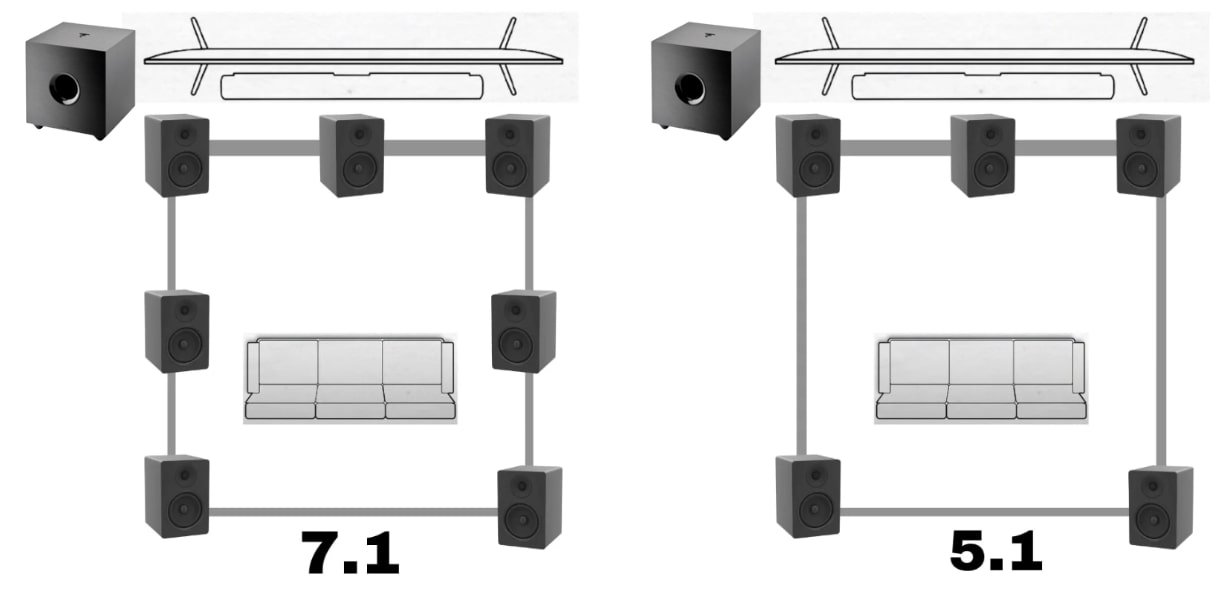
How Does Wireless Surround Sound Work?
Wireless surround sound systems operate similarly to their wired counterparts but without the need for physical connections between the audio receiver and speakers.
Instead, they utilize wireless technologies like Bluetooth, Wi-Fi, or proprietary protocols to transmit audio signals from the receiver to the speakers.
These systems often include a wireless transmitter that connects to the audio source and communicates with the wireless speakers.
Once received, the speakers decode the signal and reproduce the audio, maintaining synchronization with the rest of the system.
While wireless surround sound offers convenience and flexibility in speaker placement, it may introduce latency or potential interference issues, depending on the technology used.
How Does Surround Sound Work in Headphones?
Surround sound in headphones aims to recreate the immersive audio experience of traditional surround sound systems using only two ear cups.
This is achieved through virtualization techniques that simulate the effect of multiple speakers around the listener’s head.
Common methods include digital signal processing (DSP), binaural audio processing, and using multiple drivers within each ear cup.
By manipulating the timing, frequency, and intensity of sound waves, these techniques trick the brain into perceiving directional audio cues, resulting in a sense of spatial awareness and immersion, even though the sound is coming directly into the ears.
How Does Surround Sound Work with TV?
Surround sound with TV involves connecting an audio source, such as a cable box, streaming device, or gaming console, to a surround sound system or soundbar.
This can be done via HDMI, optical, or analog connections, depending on the devices involved.
Once connected, the audio signal is decoded by the surround sound system or soundbar, which then distributes it to the appropriate speakers.
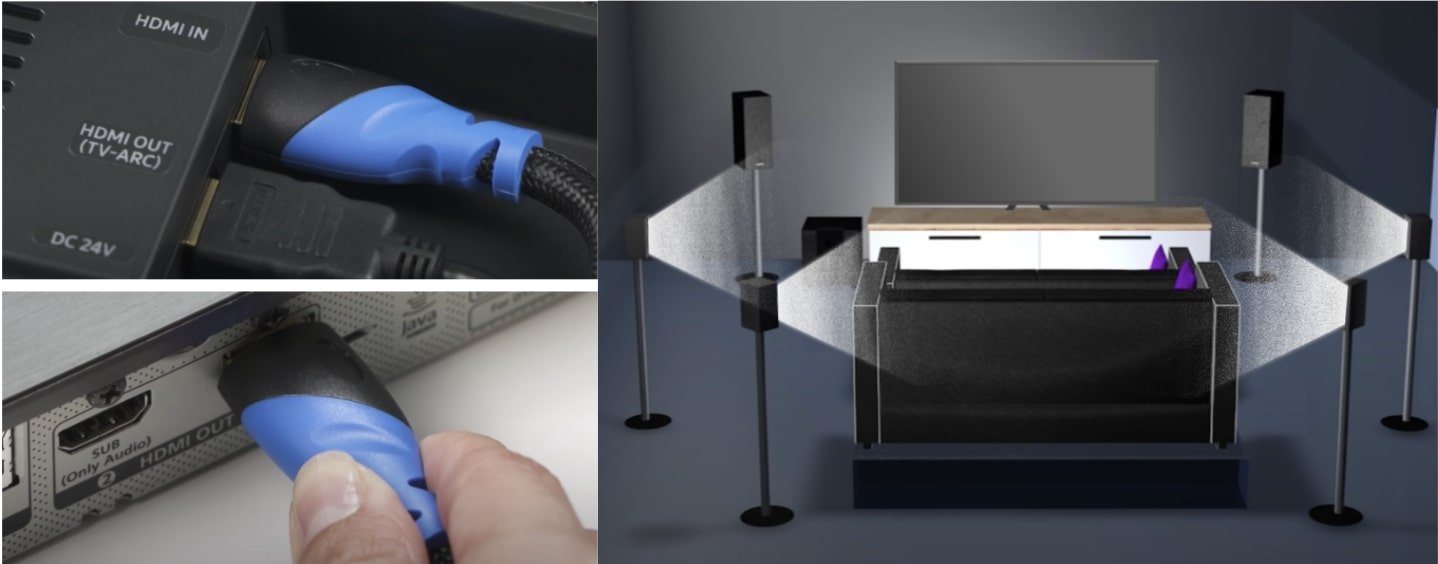
The TV itself may also support built-in surround sound processing, allowing it to output multi-channel audio to external speakers.
In some cases, TVs may even have integrated speakers capable of producing a simulated surround sound effect, although the quality may not match that of dedicated surround sound systems.
How Does Virtual Surround Sound Work?
Virtual surround sound utilizes signal processing algorithms to simulate the effect of multi-channel audio using only a stereo speaker setup.
These algorithms analyze the audio signal and apply spatialization techniques to create the illusion of sound coming from different directions.
By adjusting factors like phase, delay, and frequency response, virtual surround sound systems can mimic the way sound waves interact with the listener’s ears in a real-world environment.
This technology is commonly found in soundbars, gaming headsets, and home theater systems, offering a cost-effective alternative to traditional surround sound setups without the need for multiple speakers.
How Does 7.1 Surround Sound Work?
7.1 surround sound expands upon the standard 5.1 setup by adding two additional rear speakers, resulting in a total of seven main speakers and one subwoofer.
In a 7.1 system, sound engineers can create more precise audio placement and movement, further enhancing the immersive experience.
The additional rear speakers provide greater spatial separation, allowing for smoother panning effects and a more enveloping soundstage.
Audio content encoded in 7.1 format contains separate channels for each speaker, ensuring that the receiver can accurately decode and distribute the sound to the appropriate speakers.
This format is commonly used in high-end home theaters and gaming setups, offering unparalleled audio fidelity and immersion.
Conclusion:
Surround sound technology has revolutionized the way we experience audio, transforming our living rooms into personal theaters.
Understanding how does surround sound work, its workings, components, and setup, you can elevate your audio experience, immersing yourself in a sound environment that’s as close to reality as possible.
Whether you’re watching a movie, playing a video game, or listening to music, surround sound ensures you’re not just hearing the action—you’re living it.
